Raj Khosla
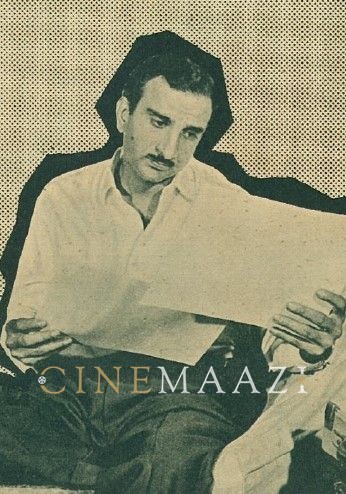
Subscribe to read full article
This section is for paid subscribers only. Our subscription is only $37/- for one full year.
You get unlimited access to all paid section and features on the website with this subscription.
Not ready for a full subscription?
You can access this article for $2 , and have it saved to your account for one year.
- Real Name: Desraj Khosla
- Born: 31/05/1925 (Ludhiana, Punjab)
- Died: 09 /06/1991 (Bombay)
- Primary Cinema: Hindi
- Children: Milan Luthria, Sunita Khosla Bhalla
Trained in what is sometimes called the ‘Guru Dutt school of filmmaking’, Raj Khosla was adept at panning his camera, using slick, sensuous musical sequences, bringing glamour to the screen and using close-ups and mid-shots with ease. A lively sense of camera-play imparted an uncommon fluidity to his images. Influenced by Hollywood thrillers, Raj Khosla worked extensively with crime on the screen—with his very first film, Milaap (1955), he made room for a heady mix of embezzlement, deception and romance. His second film, C.I.D. (1956) was also a crime-thriller which proved to be a hit. In varying measures, an element of crime made an appearance in his films, adapted often from scripts he had written, like Solva Saal (1958), Kala Paani (1958), Bombai Ka Babu (1960), Ek Musafir Ek Hasina(1962), Woh Kaun Thi? (1964), Mera Saaya (1966) and Anita (1967). Of these, Bombai Ka Babu (1960), in particular, boasted some impressive camerawork, opening on a Hitchcockian noir-ish sequence shot from within a car, looking out at a rain-drenched Bombay. Ek Musafir Ek Hasina (1962) was the director’s ode to musicals, while Anita (1967) returned to his patented mystery yarn, though it was less successful than his other ventures. Over the course of his illustrious career, however, Khosla only made a handful of films, numbering around 40.
Raj Khosla was born as Desraj Khosla on 31 May 1925 in Ludhiana. His father was a railway officer. Following his father’s transfer, the family moved to Bombay when he was seven years old. In Bombay, Desraj was enrolled in the Anjuman-e-Islam High School. Since the young boy was far more interested in cricket than his studies, his father whisked him away to another institution. Raj Khosla graduated in Arts in 1945 and secured a job as an apprentice in the Mandvi branch of the Punjab National Bank. His banking career lasted about three months. He broke away from the bank when communal riots broke out in the city.
A frequenter of the Coffee House in Bombay, Raj soon started rubbing shoulders with other visitors like Dev Anand. Their friendship led to him playing the second lead in a film titled Rain Basera, but unfortunately, the film led him nowhere. Three years after his graduation, Raj Khosla found himself a selected candidate for both the All India Radio and the army. He chose to join AIR as an announcer for a monthly remuneration of eighty rupees.
In due course, his friendship with Dev Anand took him to the latter’s production unit as an assistant to Guru Dutt in Baazi(1951). He continued as Guru Dutt’s assistant for Jaal(1952) and Baaz (1953). During the making of Aar Paar (1954), the producer of Jaal, T.R. Fatehchand, gave Raj Khosla a break as an independent director. Subsequently, he made his directorial debut with Milaap. The story about a simple villager heading to the city was inspired by Frank Capra’s Mr. Deeds Goes to Town (1936). The film, unfortunately, did not make waves, despite good performances by Dev Anand, Geeta Bali and K.N. Singh in the lead roles. Guru Dutt was not deterred, however, and invited Raj Khosla to direct C.I.D., starring Dev Anand, Shakila, and Waheeda Rehman. The film was Rehman’s debut as a vamp and proved to be a commercial and critical success. With this, Khosla was inducted into the big league of Hindi film directors.
The success of C.I.D. was followed by Solva Saal (1958), a story of a single night tracing the journey of a young girl who elopes with her lover who betrays her. She must make it back home before her father wakes up. Subsequently, Khosla’s Kala Paani (1958) demonstrated the eternal conflict between good and evil through the travails of a young man who learns his father has been committed to prison unjustly and strives to clear his name. Kala Paani (1958) received acclaim for the performances delivered by Dev Anand, Nalini Jaywant and Kishore Sahu, V. Ratra as the cinematographer and Khosla as the director also came in for praise. Bombai Ka Babu (1960) delved into an unusual love story with shades of incest and crime. All these films helped Khosla’s reputation as one of the most versatile filmmakers in the Hindi film industry.
In 1964, the release of Woh Kaun Thi? (1964) further cemented Khosla’s position in the industry. Starring Sadhana and Manoj Kumar in the lead roles, the film was loosely adapted from Wilkie Collins’ The Woman in White. Khosla skillfully created a mysterious ambience with fog-filled outdoor shots, creaky doors, and an expansive abandoned house. The film also gave its audience Madan Mohan’s remarkable music, with gems like the famously haunting Lag jaa gale voiced by Lata Mangeshkar. Woh Kaun Thi? (1964) was followed by Mera Saaya (1966) and Anita (1967), completing a trilogy of sorts of mystery films peopled with deceitful women.
Raj Khosla also tried his hand at directing social dramas like Do Badan (1966) and Do Raaste (1969). Starring Rajesh Khanna and Mumtaz, Do Raaste (1969) made box-office history with the song Bindiya chamkegi, which is still praised for its unique picturization. He also made the action-oriented dacoit film Mera Gaon Mera Desh (1971) starring Vinod Khanna as Jabbar Singh, a role that inspired Gabbar Singh’s character in the iconic Sholay (1975). Dharmendra and Asha Parekh played the lead roles in Mera Gaon Mera Desh (1971). In the 1970s, Khosla continued to deliver hits like Kuchche Dhaage (1973), Shareef Budmaash (1973) and Nehle Peh Dehlaa (1976). With Main Tulsi Tere Aangan Ki(1978), he demonstrated his skill at handling a woman’s story yet again, when he decided to tell the story of a woman guilty of separating her husband from his former lover, a court dancer. The film was highly praised and earned Nutan the Filmfare Award for Best Actress.
Khosla continued to work over the 1980s as well, but his films in this decade were markedly less successful. Following Daasi(1981), Maati Maangey Khoon(1984), Sunny(1984) and Naqab (1988)—inspired by his earlier Woh Kaun Thi? (1964)—he bid adieu to the film world. He passed away in Bombay on June 9, 1991.
-
Filmography (24)
SortRole
-
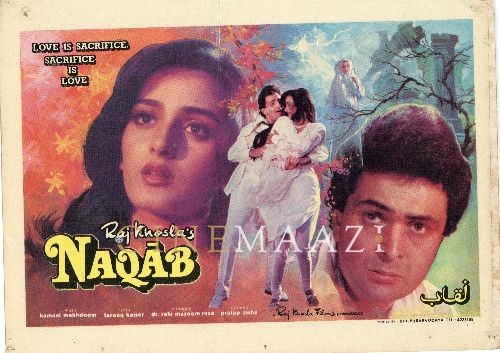
Naqab 1988
-
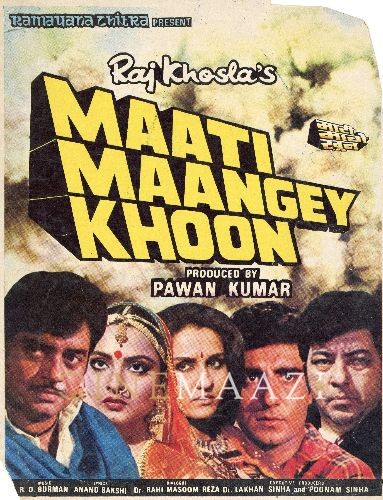
Maati Maangay Khoon 1984
-
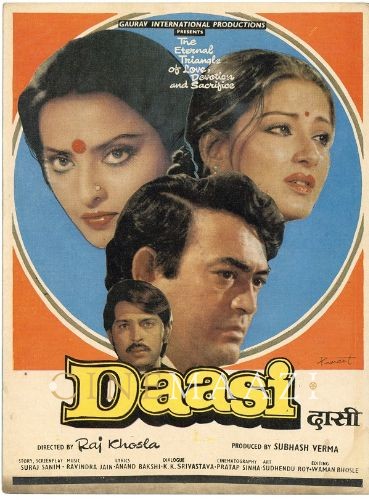
Daasi 1981
-
Khuda Kasam 1980
-

Do Premee 1980
-
Dostana 1980
-
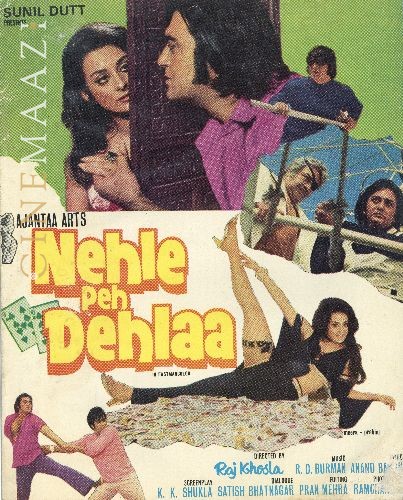
Nehle Pe Dehlaa 1976
-

Prem Kahani 1975
-
Shareef Budmaash 1973
-
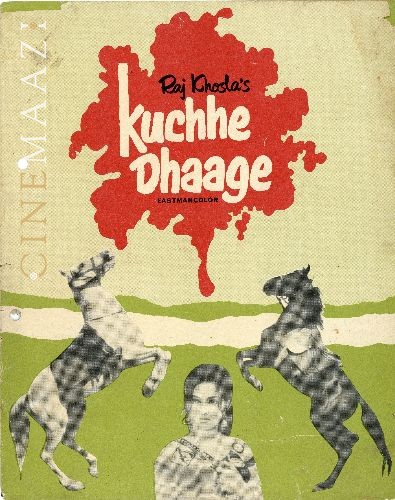
Kuchhe Dhaage 1973
-









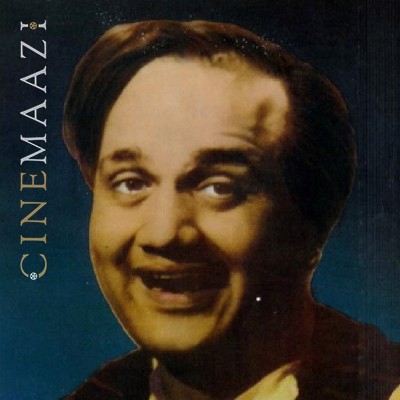

.jpg)



